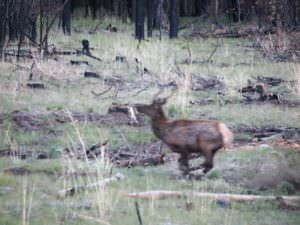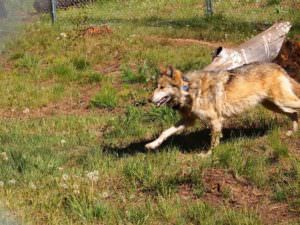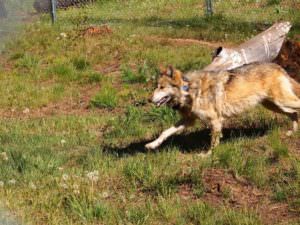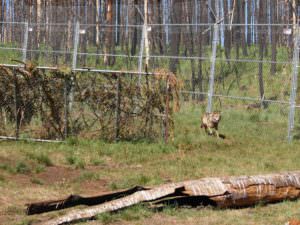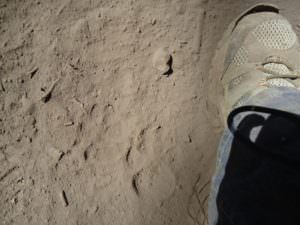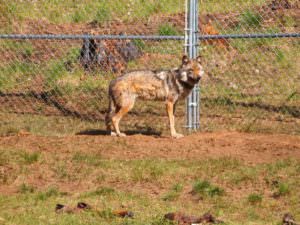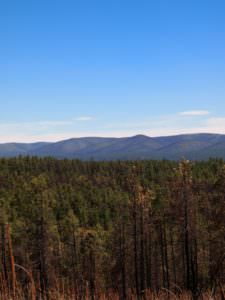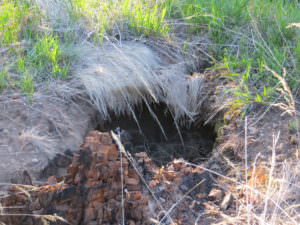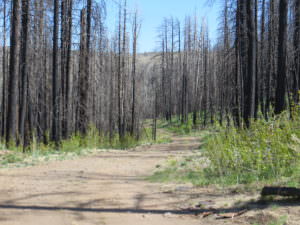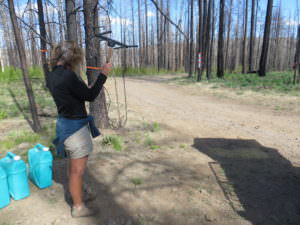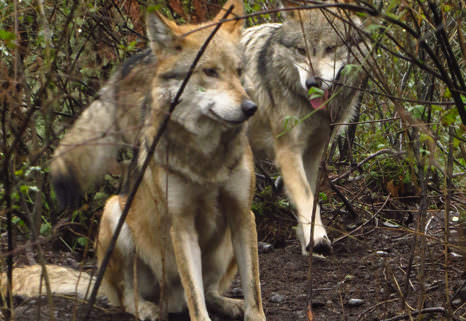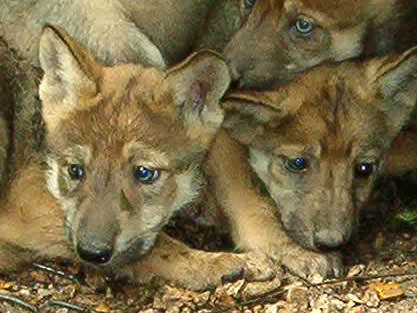Helping Save Mexican wolves (#10) – F1305 just wants to have fun
Nearly exterminated in the wild during by the 1930s, the Mexican wolf remains one of the most endangered mammals in North America. In May, Wolf Haven’s Director of Animal Care Wendy Spencer assisted in the care & observation of two wolves scheduled for future release. This is Part 10 of an ongoing series of blog posts about her experience in Arizona.
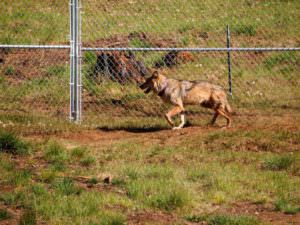 While M1107 would take a time out from fence fighting, F1305 would play on the nearby log pile. She had what would be analogous to a play face and though her tail was straight up, her movements were exaggerated and clumsy as she would often try and invite M1107 to play.
While M1107 would take a time out from fence fighting, F1305 would play on the nearby log pile. She had what would be analogous to a play face and though her tail was straight up, her movements were exaggerated and clumsy as she would often try and invite M1107 to play.
He wanted no part though, as he was clearly in battle mode and focused solely on his rivals. Obviously, there was a conversation that took place between him and the pair because after several minutes of truce (and rest) the three wolves would once again take up their positions at the fence and resume fighting. Meanwhile, the little female would bow and jump around in circles- clearly she did not take this as serious as her new companion did. However, when the fence fighting would increase in intensity, then she would join the fray briefly.
The fence fighting continued for almost 2 hours but just before 7 am, I observed the pair walk over to far side of the pen and curl up in a day bed. M1107 paced back and forth along the fence line as if trying to encourage them to come back, but to no avail. Realizing the pair was not going to take his bait, he headed towards the north side of the pen where he took up post like a sentry. He eventually lay down, but kept a watchful eye. The little female was relentless in her attempts to get M1107 to play- she kept pouncing his head and playfully nipping at his rump, but he ignored her. Perhaps out of sheer boredom, she eventually laid down as well.
Throughout the morning either M1107 or F1226 would initiate a howl but all four would stop what they were doing and join in- it was mesmerizing. Even as I made my way back to camp, I would hear their melodic chorus as it drifted by, carried on the early morning breeze. However, in addition to the howling, I heard bouts of fighting as well and that continued well on into the late morning….. (to be continued)

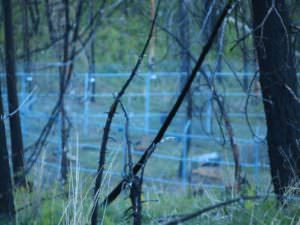
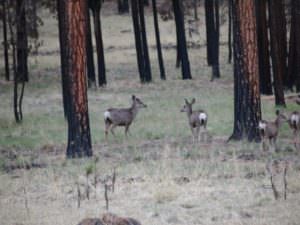 As I crested the ridge, I could hear loud whimpering and whining coming from the pen, amplified by the surrounding hillsides. I was still too far off to see the pen but the sounds continued as I approached. Out of the corner of my eye I saw a group of mule deer slinking past me. Their eyes were as big as saucers and even an uneducated observer like me could tell they were concerned about something. I continued to make my way down to the blind and as the pen came into view I could see movement along the perimeter in front of me.
As I crested the ridge, I could hear loud whimpering and whining coming from the pen, amplified by the surrounding hillsides. I was still too far off to see the pen but the sounds continued as I approached. Out of the corner of my eye I saw a group of mule deer slinking past me. Their eyes were as big as saucers and even an uneducated observer like me could tell they were concerned about something. I continued to make my way down to the blind and as the pen came into view I could see movement along the perimeter in front of me.